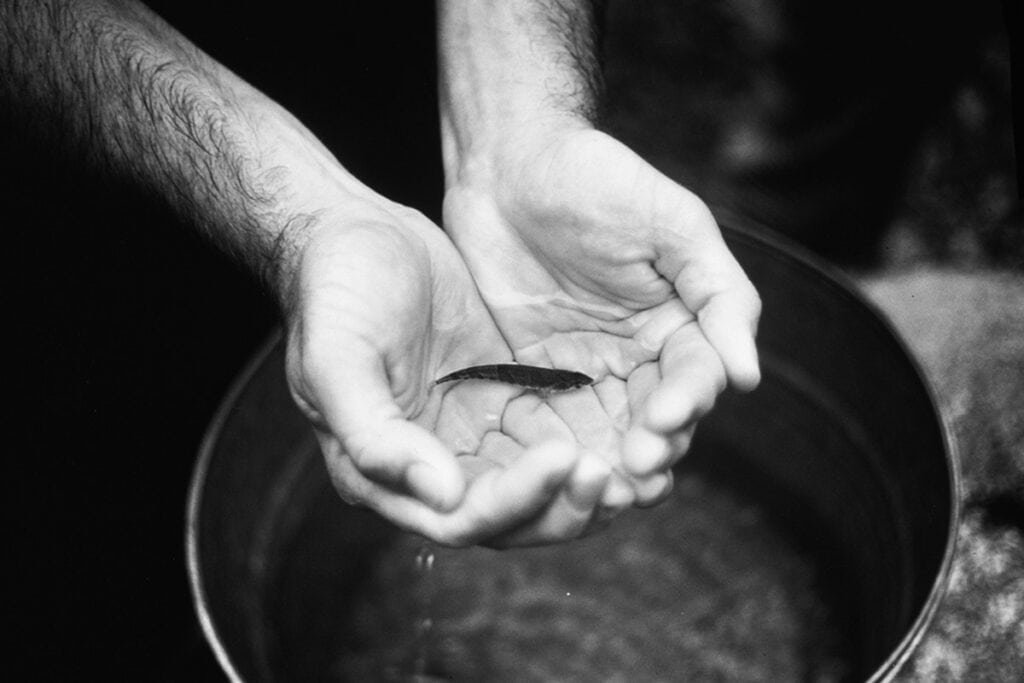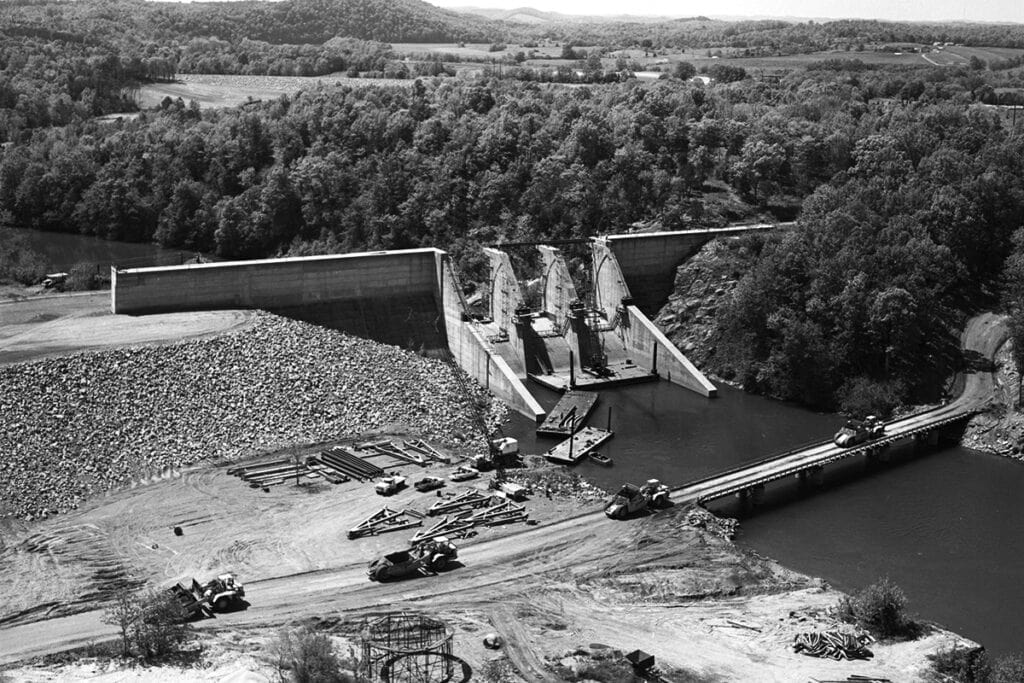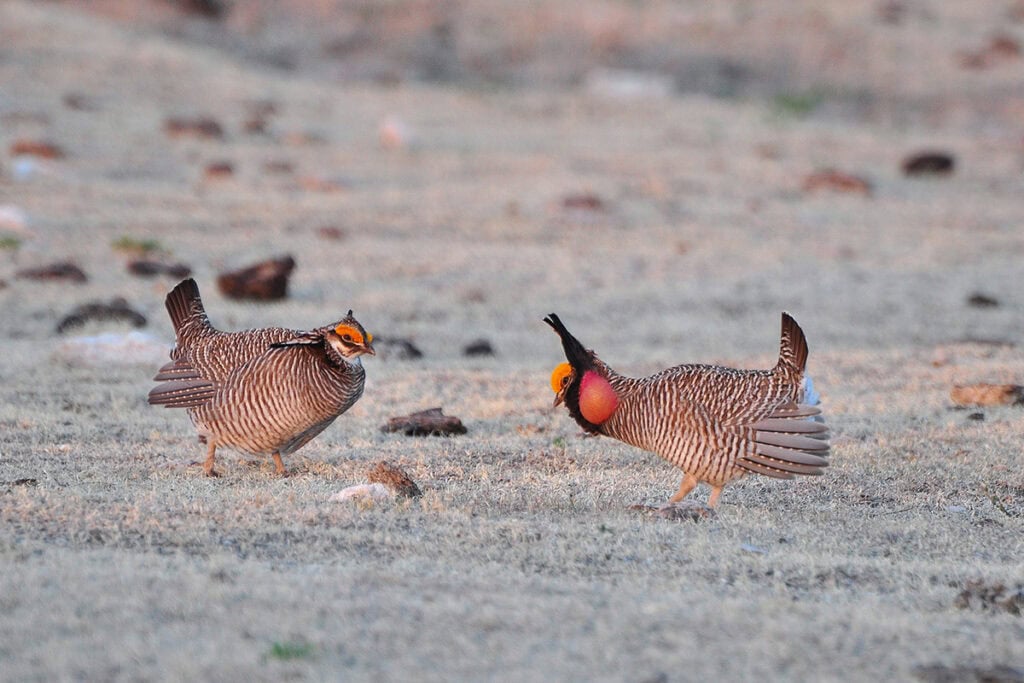
This special issue of PERC Reports examines the Endangered Species Act with an eye toward improving the incentives for species recovery. Read the full issue.
Almost immediately after the Endangered Species Act was enacted, the law faced its first big test: a case pitting the conservation of an obscure, three-inch minnow against the completion of a $100 million dam. Now, nearly 50 years later, the fish at the center of the case, the snail darter, has recovered. While the snail darter may always be best known for the initial conflict, its recovery teaches a different lesson.
In 1973, a biologist discovered a snail darter in a section of the Little Tennessee River where a federal agency was constructing the Tellico Dam. When the fish was listed as an endangered species in 1975 and the dam was nearly complete, environmentalists and nearby landowners sued to block completion of the dam, arguing that it would destroy the species’ critical habitat. In 1978, the dispute reached the U.S. Supreme Court. To some surprise, the court sided with the minnow, declaring that the statute makes species protection the nation’s “first priority,” trumping all other policy considerations. It must be pursued, the court held in an oft-quoted phrase, “whatever the cost.”
The controversy over the snail darter is infamous, but the lesser-known story of how the species eventually rebounded offers more valuable lessons for the future of endangered species policy. Last year, the snail darter officially recovered and was delisted. When the U.S. Fish and Wildlife Service announced the recovery, it didn’t credit the court decision. Instead, the recovery was attributed to moving past conflict in favor of collaboration and proactive effort. “It is very fitting that this fish, which was once a source of controversy,” observed the agency’s director Martha Williams, “became the subject of cooperation and partnerships to save it.”
Reducing conflict over listed species and encouraging cooperative conservation is the focus of a new report from PERC. “A Field Guide for Wildlife Recovery” explores 10 ideas to improve the law or its implementation to produce better incentives for states and landowners to restore habitat and engage in proactive recovery efforts. By making rare species an asset rather than a liability, we can make greater progress toward the Endangered Species Act’s ultimate goal of recovering species.
Setting Aside Conflict
The Supreme Court’s decision blocking Tellico Dam apparently surprised Congress, which essentially reversed the ruling within a few months. First, Congress revised the Endangered Species Act to require consideration of economic and other impacts when designating critical habitat for species. If the negative consequences of a designation exceed the benefits, according to this amendment, federal agencies can decline to designate an area unless doing so would cause the species’ extinction.
Congress also established an Endangered Species Committee of federal officials to review projects like the Tellico Dam that jeopardize listed species. Known colloquially as the “God squad,” this committee can exempt projects from the Endangered Species Act and, potentially, approve the extinction of a species. Fortunately, such exemptions have been rarely pursued, and no species has been allowed to go extinct through this means.

Then, for good measure, Congress legislatively approved completion of the Tellico Dam in 1979, thereby exempting it from Endangered Species Act regulations. It also provided that subsequent operation and maintenance of the dam would not be inhibited by the act.
While the first act of the snail darter’s journey through the Endangered Species Act made a big splash—and continues to color endangered species conflicts—Congress brought the curtain down on it within five years. The second act would prove less contentious and more beneficial to the species.
Moving on to Recovery
The snail darter is one of only about 57 domestic species to recover under the Endangered Species Act, a recovery rate of only 3 percent. According to PERC’s research, this is substantially less than what the Fish and Wildlife Service itself deemed possible by now. For that reason, the snail darter’s recent recovery is more noteworthy than the conflict its listing provoked. That recovery also offers important lessons for other species and the future of the Endangered Species Act.
In 1983, the Fish and Wildlife Service released a recovery plan for the snail darter that called for establishing additional populations and working with federal and state agencies and private landowners to improve habitat. It might seem strange that a recovery plan wasn’t developed until nearly a decade after the snail darter was listed and regulatory decisions had stirred such high-stakes conflict. In the snail darter’s case, the delay is partly excused because Congress didn’t require recovery planning for listed species until 1978. But delays in developing recovery plans are still quite common.
Although recovery plans are required for every listed species, they are too often treated as an afterthought. A 2018 Defenders of Wildlife Study found that nearly 25 percent of listed species had no recovery plan and, of those that did, half were not developed until at least five years after the species was listed. Closing this gap is likely to be slow. This year, for instance, the service set a goal to have recovery plans for 81 percent of listed species, an improvement over the 2018 findings but substantially short of the statute’s requirements.

By the time the service begins the recovery planning process for a listed species, it has already made critical decisions that affect, for good or ill, states’ and landowners’ incentives to restore habitat and collaborate in recovery efforts for that species. Major regulatory decisions, including the designation of critical habitat and design of regulations for threatened species, coincide with listings or closely follow them. Often, these regulatory decisions burden states and landowners who provide habitat for species, making the species a liability to them.
Director Williams has described this prioritization of regulatory decisions over recovery planning as a “missed opportunity” to design regulations to fit “a larger conservation strategy.” A premature critical habitat designation may, for instance, lower property values and alienate landowners who are later identified as necessary partners for recovering the species. Or regulations for threatened species may not align with the goals of a later recovery plan or provide any incentives for states and landowners to meet those goals.
“A Field Guide for Wildlife Recovery” proposes several reforms to recovery planning that could help more species recover like the snail darter has. First, Congress should require prioritization of recovery planning by directing that plans be completed before discretionary regulatory decisions are made so that the plans can inform those decisions. Second, Congress should require recovery plans to contain objective recovery goals and, to encourage states and landowners to meet those goals, direct that species be delisted when they are met. And, finally, states and private parties should be given greater opportunities to lead the development and implementation of recovery plans.
Collaborative Conservation
Another lesson from the snail darter is the importance of collaborative and proactive recovery efforts. With the Tellico Dam moving forward, the Fish and Wildlife Service began in the late ‘70s to look for other snail darter populations as well as sites to translocate fish that would be harmed by the dam. Fortunately, it found both. Thanks to these newly discovered populations and sites, the service upgraded the species’ status from endangered to threatened in 1984, one of only 58 listed species to take this step. With the status upgrade, the service also withdrew the critical habitat designation that caused the earlier conflict.
In the 1990s, the Tennessee Valley Authority, which operates the Tellico Dam and other dams in the Tennessee Valley, modified the operation of its dams to improve streamflow for fish. The Nature Conservancy and Natural Resource Conservation Service restored natural stream channels. And states took steps to improve water quality. Luckily, snail darters also proved to be more resilient to habitat changes than previously thought.

Over nearly 50 years, the snail darter grew from one known population to 17 populations occupying varied habitats. Ten of those populations were in tributary streams. And another seven resided in reservoirs. In celebrating the snail darter’s recovery, Director Williams “thank[ed] the many partners, including the Tennessee Valley Authority, which made this possible.”
Unfortunately, such results are rare. In 2017, the last year for which this data is available, the service reported that only 4 percent of listed species were “improving” based on their most recent status review. That percentage had been trending downward over the previous five years, and the trend was predicted to continue. Without proactive and collaborative conservation efforts, few species make progress toward recovery.
“A Field Guide for Wildlife Recovery” offers several ideas to better incentivize collaborative conservation for endangered and threatened species. It suggests reforms to give federal agencies incentives to incorporate proactive recovery efforts into their activities, as the Tennessee Valley Authority did for the snail darter. Reducing red tape for these agencies, in exchange for proven benefits to species, would be a win-win for species and agency goals.
Without proactive and collaborative conservation efforts, few species make progress toward recovery.
PERC’s “Field Guide” also recommends reforms to encourage reintroduction of struggling species into suitable habitats. Currently, regulations make reintroduced species a significant liability for landowners and management challenge for states. Colorado, for instance, would like to voluntarily reintroduce gray wolves, but proposed federal regulations threaten to hamstring the state’s ability to manage wolves. Moreover, by imposing burdensome restrictions on landowners and neighboring states, it could jeopardize the political cooperation needed to move forward. If, instead, states and landowners were positively rewarded for collaborating in species reintroductions, these efforts would be less contentious and more common.
Another way to encourage proactive conservation efforts is to encourage them through the creative design of regulations for threatened species. These regulations could set incremental recovery targets, such as population increases, acres of habitat restored, or the number of reintroduced populations established, and directly reward states and landowners through gradually reduced regulation as they are met. Although the service has historically preferred a cookie-cutter approach to threatened species regulations, Brian Yablonski describes one way to use this authority more creatively to recover grizzly bear populations.
Lessons Unlearned
Whether the Fish and Wildlife Service will learn the correct lessons from the snail darter remains to be seen. But one early indication is disheartening. Six weeks after crediting the snail darter’s recovery to the setting aside of conflict in favor of collaborative conservation, the service upended ongoing collaborative recovery efforts for the lesser prairie chicken and teed up conflicts with states and landowners.
A medium-sized grouse, the lesser prairie chicken roams 17 million acres of grassland in Kansas, Colorado, New Mexico, Oklahoma, and Texas. Loss of habitat, drought, and other threats caused the species’ population to plummet to around 15,000 in 2013. Worried about the consequences of an Endangered Species Act listing for agriculture, wind energy development, and other activities, the states, landowners, and conservation organizations worked together on ambitious plans to recover the species. By 2020, the population had doubled to more than 30,000, due to the combination of voluntary conservation efforts and the end of a prolonged drought.
But the service deemed this progress insufficient and too slow. It listed the population in New Mexico and Texas as endangered and the rest of the species as threatened last year. For the threatened population, the service issued a regulation broadly prohibiting activities on private land that affect the bird, including habitat restoration, without a federal permit. The regulation also controversially requires ranchers to obtain a federally approved grazing plan to avoid liability for any inadvertent impacts to lesser prairie chicken.

Perhaps the service could develop a better recovery plan than what the states, landowners, and conservation organizations came up with. But we may not know for a long time. As usual, the service did not prepare a recovery plan before or while listing the species. Based on the agency’s track record, it will likely be years before one is finished. And if that plan doesn’t produce the kind of results that the collaborative efforts have over the last 10 years, the service will almost certainly say that’s not enough time to judge its efforts.
The decision to list the lesser prairie chicken and the controversial regulations issued for it also brought an end to the sense of collaboration that had boosted the species’ population over the previous decade. Many of those who had been voluntarily conserving habitat and recovering the lesser prairie chicken are now suing the Fish and Wildlife Service. Kansas, Oklahoma, and Texas, where most lesser prairie chickens are found, have challenged the decision. So too have ranchers affected by regulation of the threatened population.
The decision to penalize ranchers is puzzling. When the service proposed the regulation, PERC, the National Wildlife Federation, and other conservation groups criticized the proposal as irrationally penalizing the very landowners who were voluntarily conserving the birds’ grassland habitat. Alienating those ranchers threatened future recovery efforts, we explained. How many ranchers would continue to maintain or restore lesser prairie chicken habitat if attracting the bird would only hurt their operations?
In proceeding to regulate ranching anyway, the Fish and Wildlife Service declined to consider “the costs of [its] rules on landowners, assessment of previous conservation provided by landowners and other groups, and calculation of what incentives for conservation [its] rules provide.” In other words, the agency consciously rejected an opportunity to consider how its rules could encourage, for the lesser prairie chicken, the sort of collaborative, proactive efforts it credited with saving the snail darter.
The Next Half-Century
While there have been disappointingly few species to recover over the last half century, species that have recovered, like the snail darter, offer important lessons. Unfortunately, those lessons aren’t always the ones we learn. Implementing the Endangered Species Act in ways that foster conflict too often undermines recovery efforts by making listed species liabilities. Species recover when conflicts are avoided or resolved and collaboration and positive incentives are used to encourage investments in habitat restoration and other proactive recovery efforts. As we enter the law’s second half-century, reforms to improve its ability to recover species are essential.




